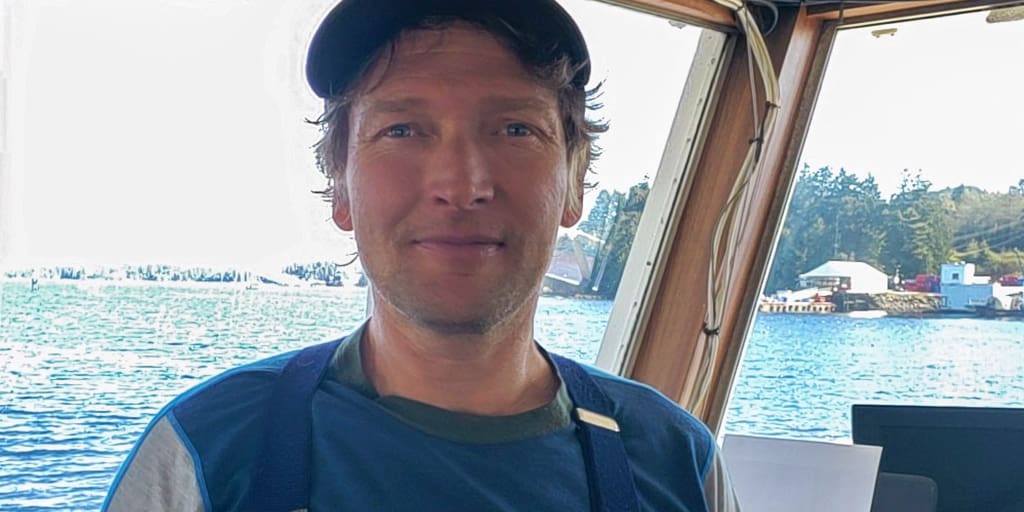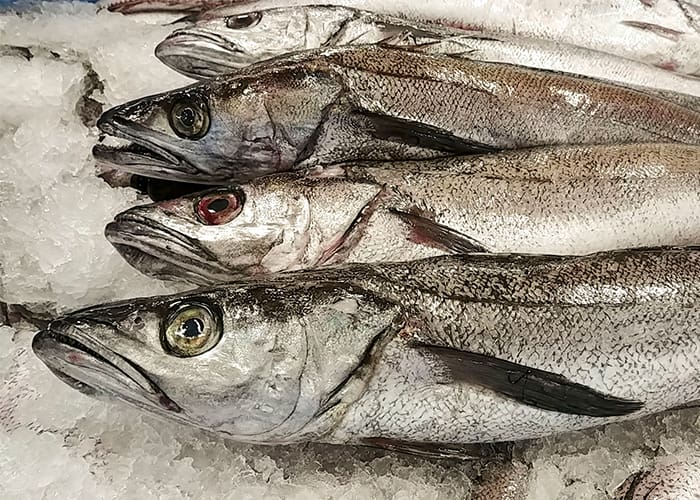Meet Cary And His Hake!
NewsWe’re thrilled to introduce our newest hake fisherman, Cary Williams - a 4th generation fisherman from Sointula, a small fishing village on Malcolm Island just off Port McNeill on northern Vancouver Island!

We’re so excited to introduce our newest hake fisherman, Cary Williams!
Cary is a 4th generation fisherman from Sointula – a small fishing village on Malcolm Island just off Port McNeill on northern Vancouver Island. Although Cary’s 91-year old grandfather, Richard, has passed the business on to his 4 kids, he still runs the fishing business, and the grandfather-grandson team work jointly to make decisions on the fishing end of things. Richard says he feels lucky to have such a knowledgeable grandson to help run the business! Cary’s step-grandmother, Ann, is the manager of the business. She started fishing when she was 28 and over the years, she’s seined, trolled, gillnetted for salmon, and also fished live rock cod. Cary and his family and crew fish primarily for hake aboard their 78 foot vessel, Island Sun. I met Cary and his family after asking around the fishing community if anyone knew if there was anyone was fishing independent hake that could potentially be sold into Canadian markets. Hake are abundant and delicious fish, but you never see them available in BC. I was curious and wanted to learn more.

Almost 100% Of BC Hake Is Exported!
We spent the last year getting to know Cary and his family and we were surprised by all the new things we learned about the industry from them and from our subsequent research. After I had several great phone conversations with Cary and his other family members, Shaun headed over to the island to meet Cary in person for coffee and tour around his boat. Cary explained to us that his family is one of the last, if not the only remaining independent hake operation in BC. Almost 100% of the hake caught in BC is exported to foreign markets. And the BC catch is huge. We catch more hake in BC than all the salmon put together! But there is no local market for it. Why? Who knows. A combination of cultural traditions and global supply chains, most likely. The hake industry has been consolidated into the hands of just a few large export-oriented operations: 7 factory vessels that are at sea for months at a time in BC waters, catching, heading, gutting, freezing, and boxing at sea before shipping straight to markets in Russia, Europe, and Asia. The largest markets for hake are in Russia and the Ukraine where hake is a much-loved delicate, mild, white fish.
Hunting For a Hake Market
Otto and Shaun used to catch hake sometimes as bycatch in their salmon gillnets. Since there was no market for these few fresh hake caught by gillnetters, they were always disappointed when they caught hake, especially since they would get tangled in the nets differently than salmon. But even 20 years ago, when I first married into the fishing family, I was already asking “If hake are abundant, why aren’t we eating those fish?” Over the years, it became my mission to create local markets for whatever the sea provided in abundance, to help people to eat with the ecosystem, and take the pressure off just a few sought-after species. Since gillnetters don’t fish areas with hake very often these days, I wanted to find a like-minded hake fishing family who shares our values around conservation, robust local food systems, and transparency, and who would be interested in joining the Skipper Otto team. And so, it is with great pleasure that we welcome Cary and his crew aboard Skipper Otto!
Is It Ocean Wise?
Because of hake’s abundance and the low-impact of the mid-water trawl on marine ecosystems and other marine species, these hake are an Ocean Wise-recommended catch. But a lot of hake caught elsewhere in the world or using other gear methods are not Ocean Wise recommended, reminding us all why it’s so important to know your fisherman!
The Logistics of Fishing Hake
Mid-water trawling is a gear method where a cone-shaped net is towed behind the boat in mid-water – not touching the sea bottom and not skimming along the surface. Mid-water trawling has much lower by-catch and environmental damage that bottom trawling, but, as with all trawling, other non-targeted species are often caught alongside the target species. In the case of hake, rockfish are the most common by-catch and, while some rockfish are Ocean Wise recommended, others are not as abundant and extra measures must be taken to protect them. To manage this, the Department of Fisheries and Oceans has by-catch quotas and strict monitoring programs in place. Cary and all hake boats must hold quota for each of the by-catch species they might catch and, if they reach their quota limit on any of their by-catch species, they can’t keep fishing. Since the target species is the one they make their biggest income from, fishermen are incentivized to fish where they will catch the least by-catch. Cary and his family are very conservation minded and Cary often applies for grant programs and researches experimental new gear ideas that will make the fishery even more sustainable.
To ensure compliance with DFO’s strict regulations, Cary and all hake fishermen must have a camera monitoring system running during their fishing trips. This third-party verified footage, along with the records of an independent validator during offloading, records what the crew is catching and provides detailed reporting to the DFO.
Rockfish Bycatch!
So, alongside Cary’s hake, you will also have the opportunity to buy some of his Ocean Wise recommended rockfish! Rockfish are a delicious, versatile white fish you often see on restaurant menus in fish tacos and a variety of other fish dishes. And because this fishery is so carefully controlled and monitored, we can all feel confident that the hake and rockfish we get from Cary’s boat are good, sustainable choices, and that your dollars are supporting a hard-working, multi-generational BC fishing family.
Hake Recipes And More from Chef Ned Bell
Since there is no local market for hake, you won’t find it in other retail shops or restaurants and you’ll have a hard time finding recipes. Creating new markets for abundant species takes some creativity! So, we turned to our friend Chef Ned Bell for some ideas. Ned came down to pick up some fresh hake from Cary’s first load (at a safe social distance!) and took these fish home to his kitchen to experiment with them. Ned will be pleased to share tips, recipes, and photos from his work with Cary’s hake in another blog post. We hope you enjoy these fish and please send us stories, photos, and recipes of what you do with your hake, too!
